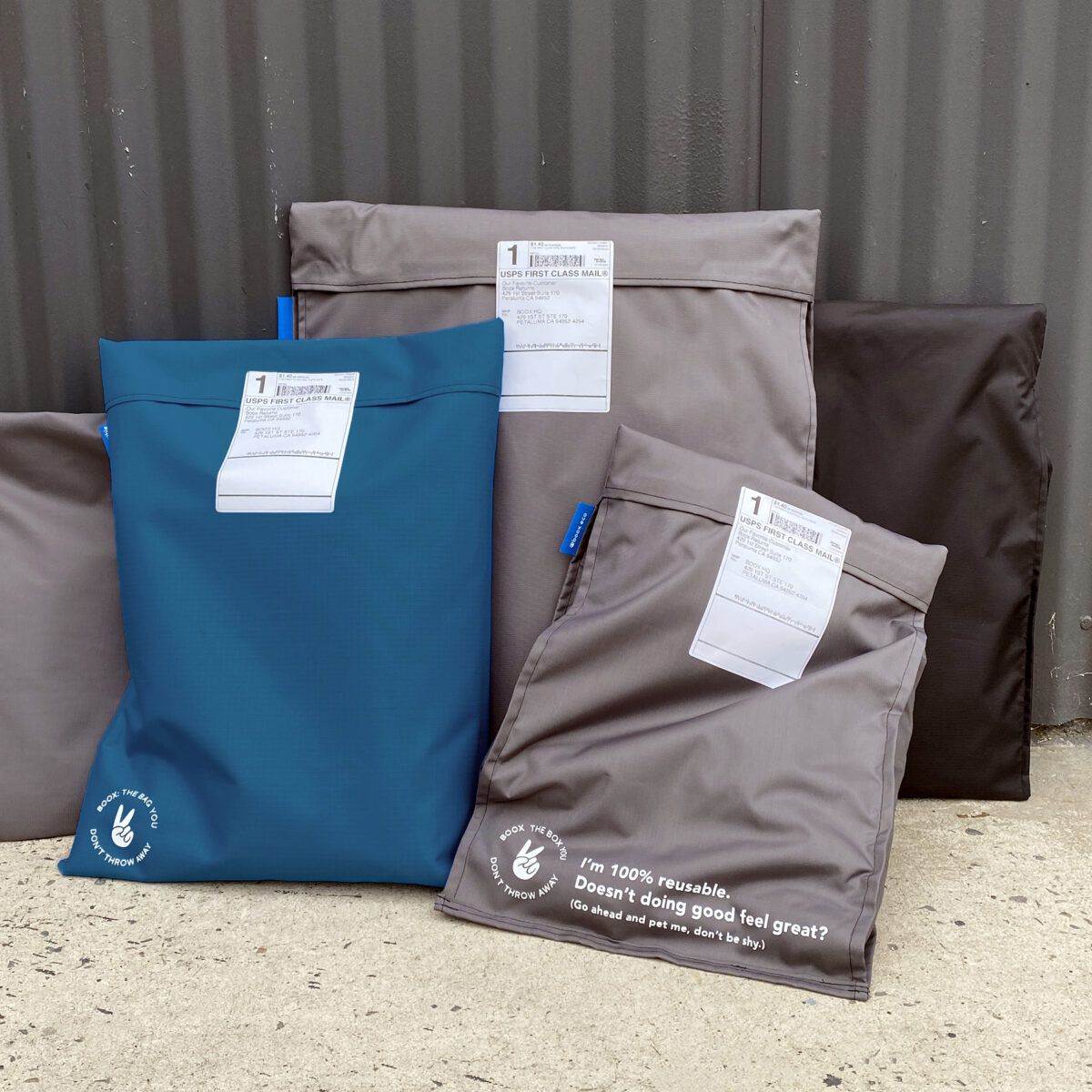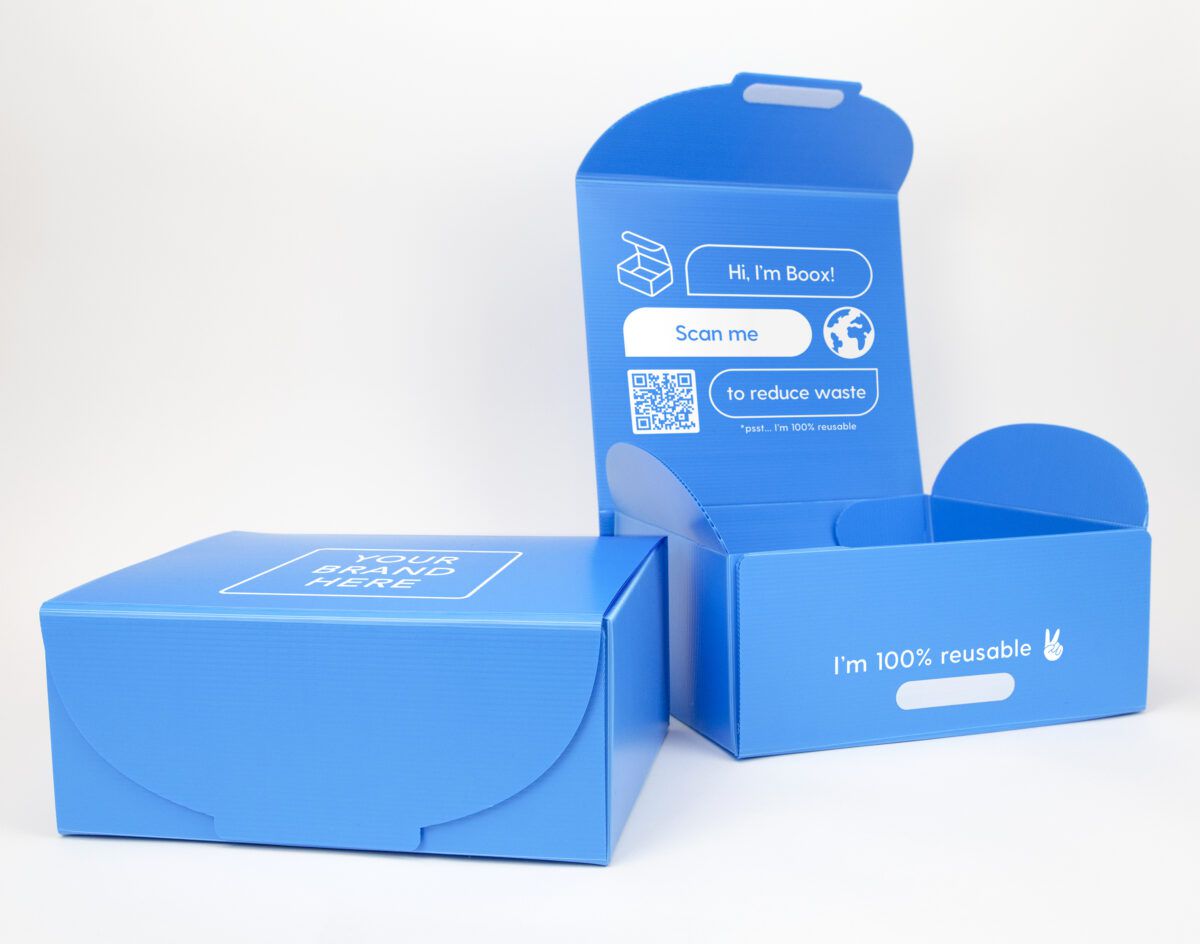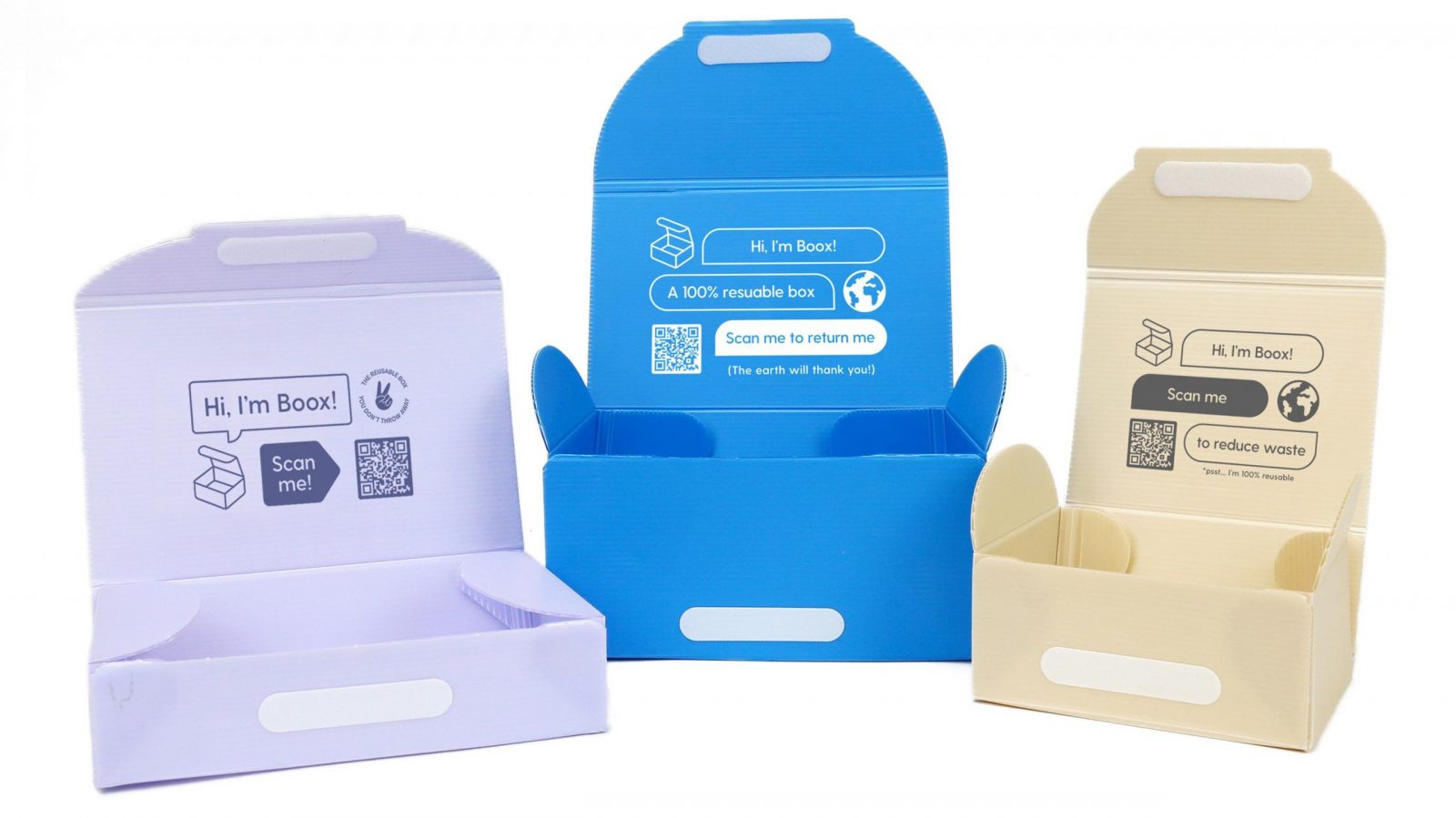The Petaluma, California-based company provides its reusable plastic Boox Boxes and nylon or polyester Baags as a service to companies that want an option to reduce shipping-related waste.
When asked if the future of packaging will be reusable, he responded, “We are certainly betting on it. … I think it’s a matter of time.
“The future is this moment when you suddenly stop receiving cardboard boxes because this works better. And it’s possible, but it’s going to take time to get there from a consumer behavior point of view,” Semmelhack said.
A few things to consider with reusable packaging include:
Packaging waste versus emissions
Many reusable packaging solutions are heavier than their single-use cardboard or plastic counterparts, which may increase emissions for transportation. This is a major argument against reusable packaging for shipping.
 (Photo:Boox)
(Photo:Boox)
Including the return trip, the impact of using a Boox box 10 times is 70% lower than using 10 cardboard boxes, according to the analysis.
But reusing shipping boxes and bags relies largely on the actions of consumers. For it to be cost-effective and environmentally sustainable, consumers are responsible for returning their boxes and bags at one of Boox’s 5,000 to 6,000 partner drop-off locations.
Consumer behavior, cost and loyalty
“You need to create a way for consumers to be able to participate in the service. It has to be convenient, it has to be cost-effective for everyone involved, and it can’t be too far outside of what you do every day,” Semmelhack said.
He said the Boox boxes could be reused and refurbished upward of 12 times, and the bags could be reused hundreds of times. But it would require consumers to return them, which can be a challenge.
 (Photo: Boox)
(Photo: Boox)
Boox’s overall return rate is estimated to be between 20% and 30%. For some brands, it’s higher than 65% or 75%, depending on how the brand educates its customers.
The return rate is “very clearly lined up” with how much brands take time to educate their customers about their reasons for switching and how to return the boxes or bags.
As companies aim for sustainability, Semmelhack said, “suggesting that doing the sustainable thing is going to cost you money is not acceptable. Ultimately, it’s not going to allow for systemic change.”
He added that some companies have slim margins, strict budgets or shareholders who would not allow for a switch to more sustainable packaging if it costs more.
The Boox website says it costs 40 cents to $1.40 per shipment, depending on the dimensions.
Semmelhack said that Boox boxes are often less expensive than cardboard, about the same or up to 3% to 5% more costly. “In many cases the Boox boxes are not only paying for themselves, but they’re generating revenue for our clients via retention and loyalty.”
Shipping in reusable containers can create higher retention rates and brand loyalty. Semmelhack said Boox sometimes gets calls about which brands it works with, and those consumers will then purchase from those brands instead of competitors to avoid the packaging waste.
“The need to be sustainable five years ago wasn’t what it is today, and part of that is being driven by consumers demanding it,” Nelson said.
Potential for circular economy through recommerce
Semmelhack said it could make the circular economy of reusable packaging even more sustainable and affordable if consumers got a Boox Baag or box with new items in it and used that same container to send used articles of clothing back through recommerce.
 (Photo: Boox)
(Photo: Boox)
“All of the infrastructure is in place. It’s really just about consumer behavior change at this point. We’ve demonstrated that we can do it affordably. We’ve demonstrated that it makes consumers happy. We’ve demonstrated that brands want this,” Semmelhack said.
Boox now operates in the U.S. and the United Kingdom and has several shapes, sizes and colors of reusable shipping boxes available.






